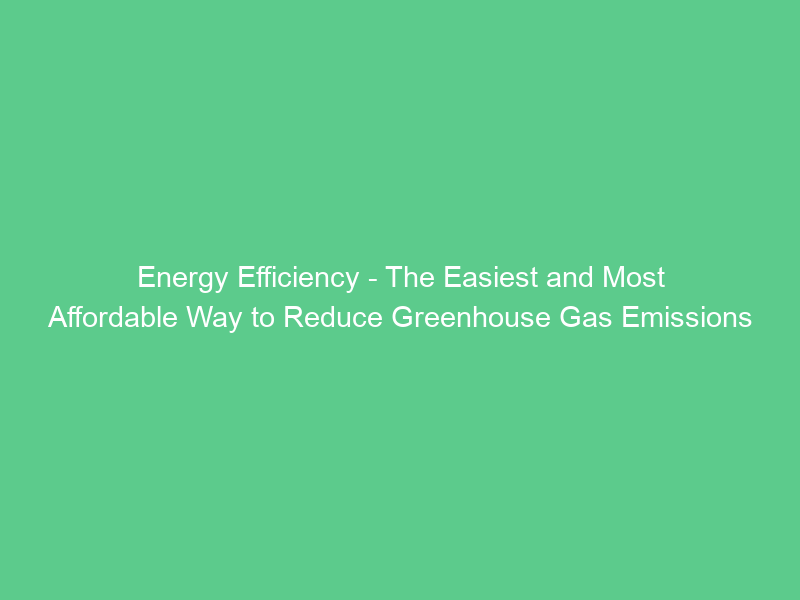Energy efficiency is one of the easiest and most cost-effective ways to lower greenhouse gas emissions, reduce dependency on volatile fossil fuels or foreign sources, increase infrastructure resilience, and mitigate demand peaks.
Investment in insulation, energy-saving appliances and smart thermostats as well as public transport can make energy more cost-effective for families with limited funds.
Reduced Utility Bills
Energy efficiency is one of the cheapest ways to reduce our reliance on fossil fuels, cutting energy costs for households, businesses, communities and the power industry alike by decreasing our demand.
Simply replacing inefficient light bulbs or installing smart plugs that automatically turn off appliances when not in use can significantly lower energy consumption and energy bills. Furthermore, opting for cold water washing instead of hot can cut costs considerably as well as switching off power strips that continue consuming electricity even when no devices are turned on or connected to them.
Energy efficiency helps countries avoid expensive investments in new energy supply infrastructure. Reducing peak electricity demand through efficiency can limit the need for additional power plants and transmission lines during times of high energy use, helping nations avoid dependence on imports while increasing energy security.
Environmental Benefits
Energy efficiency is a critical element in global efforts to combat climate change-related emissions, helping limit fossil fuel extraction and transmission infrastructure requirements while simultaneously decreasing electricity demands.
Furthermore, it enables the use of renewable energy sources with lower environmental impacts than fossil fuels – helping reduce waste from manufacturing processes as well as landfill disposal needs.
Businesses that prioritize energy efficiency can increase their environmental responsibility and become more attractive to prospective employees, particularly Millennials who place great importance on how a company handles environmental matters.
Energy efficiency offers numerous environmental advantages, including decreased air and water pollution, less damage to critical ecosystems, greater access to affordable and reliable energy, as well as helping mitigate climate changes’ negative effects on human health; for instance contributing to cleaner indoor air, which has been linked with better respiratory and cardiovascular conditions.
Economic Benefits
Energy efficiency saves consumers money on utility bills while simultaneously cutting system costs by deferring costly investments such as power lines, substations, transformers and peak-demand services. Furthermore, it expedites the phase out of fossil fuels, thus mitigating climate change risks while providing cost-effective mitigation strategies.
Building efficiency improvements have an immense effect on indoor comfort, which has many positive consequences for people’s health and productivity. These benefits are especially essential for families facing energy burdens who must choose between paying their energy bill or providing for other necessities for their family.
Energy-efficient buildings create jobs, which in turn help communities flourish – especially rural and regional areas where unemployment rates tend to be higher. Energy efficiency strategies have proven particularly successful at alleviating poverty among low-income households by improving their financial circumstances, decreasing homelessness risk and increasing property value.
Health Benefits
Energy efficient practices help ensure dwellings are warm, dry and ventilated to promote good health. Furthermore, they decrease fossil fuel reliance and emissions that contribute to indoor air pollution that may exacerbate asthma or respiratory conditions.
ACEEE and Physicians for Social Responsibility estimate, using publically available models, that reducing electricity usage by just 15% would save six lives annually and save $20 billion in healthcare costs each year; not counting other health benefits this represents an impressive return on investment.
Energy efficiency improvements such as draught proofing, better glazing and insulation can significantly enhance the living conditions of those in fuel poverty who are especially at risk from cold-related illnesses. Studies have yielded mixed results and it may be that improvements to dwelling comfort and health depend on both direct and indirect effects (Maidment et al. 2014; Sharpe et al. 2015d).

